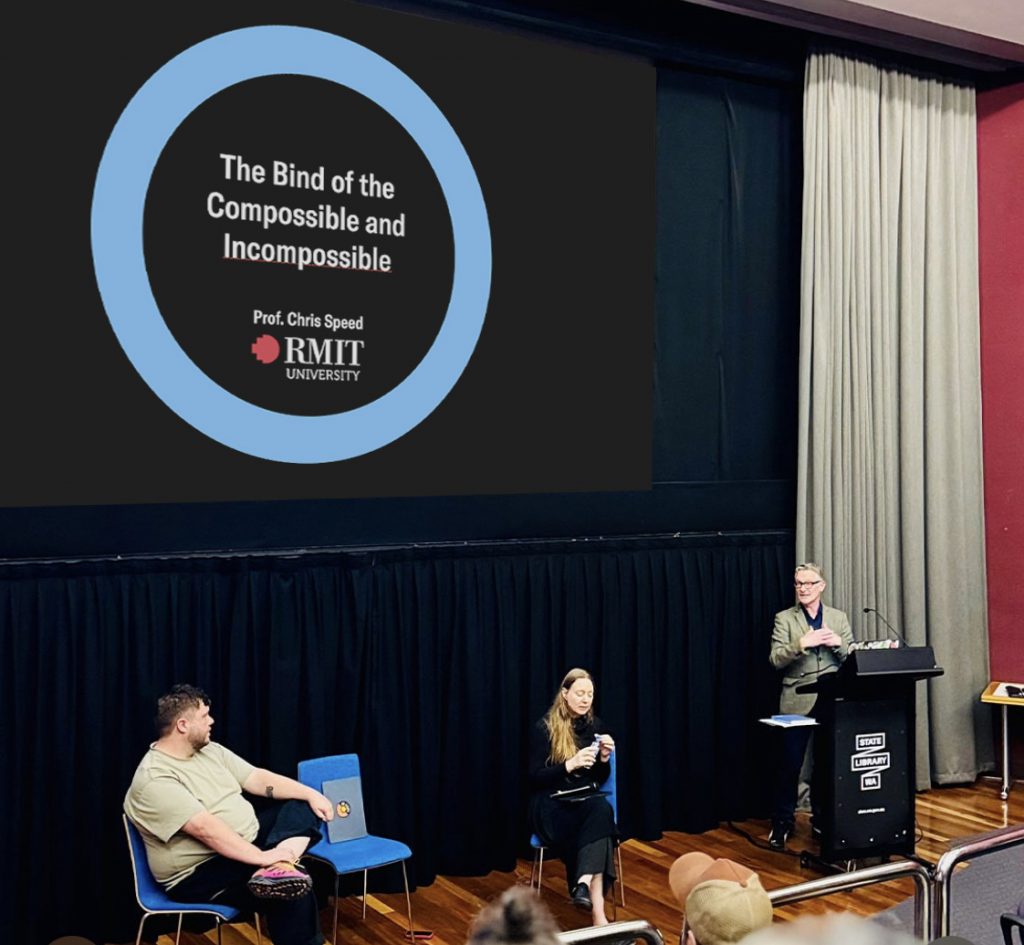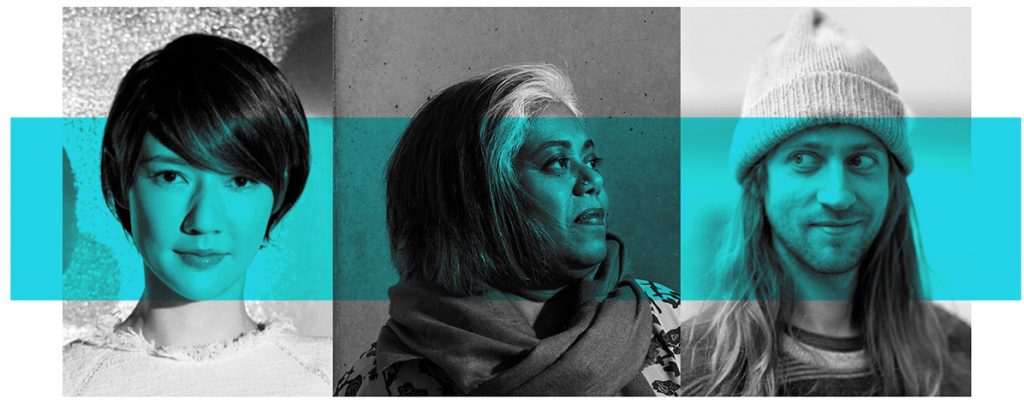A rolling stone gathers no moss and other consumer conspiracies.
Taken from:
Speed, C. (2011) A rolling stone gathers no moss and other consumer conspiracies. In Future Everything. Edited by Hemment, D. Published by Future Everything.

In April 2010, a group of trans-disciplinary academics launched the web project www.talesofthings. The site offered a simple but novel approach to recording social histories and a playful critique of the tagging culture that is associated with the emerging concept known as the ‘Internet of Things’. Our platform allows anybody to attach web content (text, image, video and audio) to an artefact through the generation of a unique QR barcode that the owner is encouraged to stick to their thing. When scanned by somebody else using a smart phone, media is launched and the object can be seen/heard to tell a story about the memories that it is associated with.
Our reasoning was simple, that the existing public use of tags (RFID, traditional barcodes and two dimensional) is based upon a ‘read only’ relationship. And although the web savvy amongst us can generate a QR code and associate it with web-based media, for many people the scanning of codes is a practice reserved for people working on super market checkouts and in passport control booths. As well as offering a place in which unique codes are generated and allow stories to be associated with artefacts, TalesofThings allows any other beholder the ability to ‘add a tale’ to someone else’s ‘thing’. By scanning a tag through the phone App, or by visiting the website, artefacts become ‘writeable’ and ‘open’ to further association. This is a critical dimension to the projects politics, that lessons learnt through Web 2.0 should be integral to any Internet of Things.
Following our launch last April the website began accruing stories that were associated with peoples actual material artefacts. However as the immaterial database grew it became clear that we needed an event that allowed the material artefacts to become an interface to our internet of things, rather than online repository of stories. RememberMe at Future Everything offered this context. The RememberMe artwork was a collaborative project with the Oxfam shop charity shop, in Manchester. During FutureEverything 2010, a research assistant based in the shop, asked people who dropped things off to tell a brief story about one of the objects into a microphone: where they acquired it, what memories it brings back and any associated stories. These audio clips were then linked to an RFID tag and QR code and attached to the items as they joined the shop’s stock. Visitors to the shop, including conference delegates were able to use bespoke RFID readers, or their own smart phone to browse artefacts that were displayed amongst the many thousands of other objects. Labels highlighted the RememberMe objects and once triggered, speakers located in the shop replayed the previous owners story, evoking a ghost from the past. Once tagged the objects were in the public domain for purchase by other members of the community, and the project’s iPhone and Android apps allowed new owners to access old stories but equally importantly, add their own.
This material ‘turn’ in the life of the project readdressed the balance of where the immaterial data was located. Instead of being accessed through a web interface, the RememberMe work explored the potential of the TalesofThings project to manifest a social Internet of Things that is situated in the event based context of exchange. An exchange of things and stories that contests many of the habitual consumer practices that have formerly defined concepts of value, quality and the destiny of artefacts. This year we wanted to exploit the projects ‘write back’ feature and see if we couldn’t tip the balance between immaterial and material in favour of the former. In RememberUs, the team has set up two shops that act as supernatural portals to the Internet of Things. Visitors to the Oxfam Emporium are invited to ‘let go’ of memories that are associated with particular things by attaching stories to our memory vessels, moments later in the Oxfam Originals shop just down the street, people will ‘pick up’ your memory and the memories of others when they are associated with another ‘thing’ that they choose buy. Leaving the shop with what may be perceived to be a second hand item, shoppers will take with them many, many memories that have been associated with their new shoes, trousers or dress, exploding the assumption that a rolling stone gathers no moss. In a network society every ‘thing’ is part of a vocabulary of exchanges, in which artefacts are increasingly becoming hosts to multiple meanings and values. Keeping each thing open to interpretation may prove to be a critical role that consumers can play in resisting the determinism of vendors who would have us believe that a rolling stone has only one purpose as it travels downhill toward its grave.
Related posts

“This communication is not for you.”
Looking to connect 2 recent events / conversations (as is my want) this time to explore a fundamenta

Design Frequencies: Sharing International Practice in Design Research
Already deep into semester two here. Last semester School of Design RMIT College of Design and Socia

The Labour of the Rejected / “Walk the Plank”
Still playing catchup with so many events. A few weeks ago during hashtag#DIS2025, Mafalda Gamboa an

Design Contradictions
Two projects during Melbourne Design Week with collaborators Michael Dunbar and Liam Fennessy to exp

Paradox of Collaborative Speed
Two events in Melbourne over the past 10 days week revealed a tension across contemporary technology

Slow Materials, Slow Money: Can Design Decelerate?
Two events that I’m trying to tie together to glean some connections. The CHI panel on Regenerativ

From Food Networks to AI Governance
Back to reporting on events in Narme/Melbourne. From Food Networks to AI Governance: Reflections on

Planetary Pedagogies
Following the launch of PlanetaryCivics two weeks ago, this is the second extension to contributions

Space Debris to House Keys
Part 2 of catching up with the weeks of activity in Melbourne through February. From Space Debris to

Measuring our demise
Oh Melbourne, three parallel events that spanned the week: RMIT College of Design and Social Context